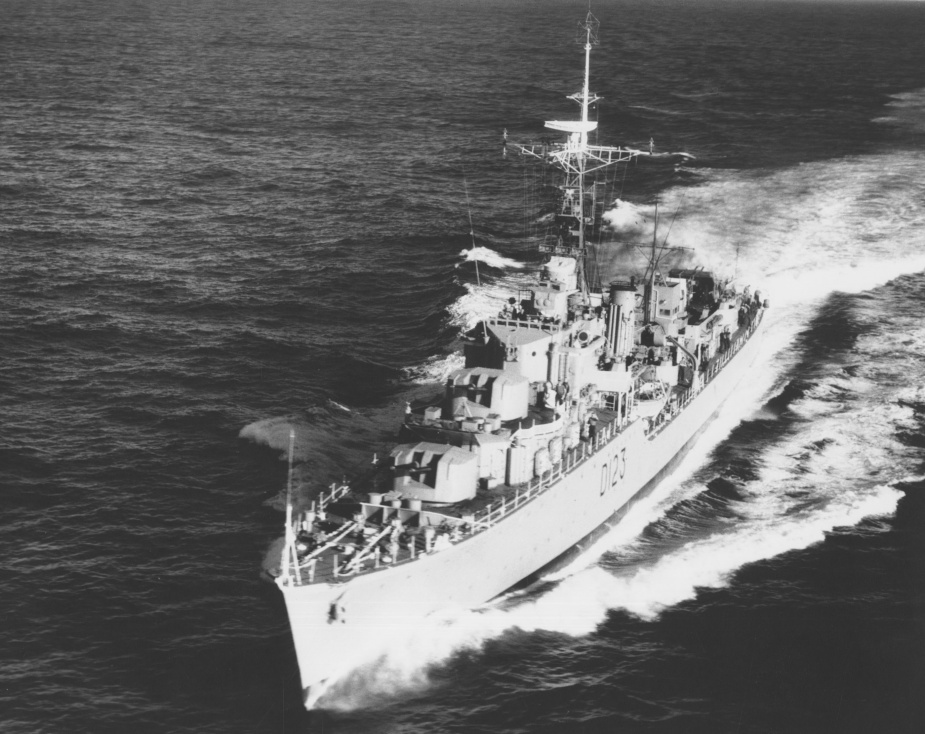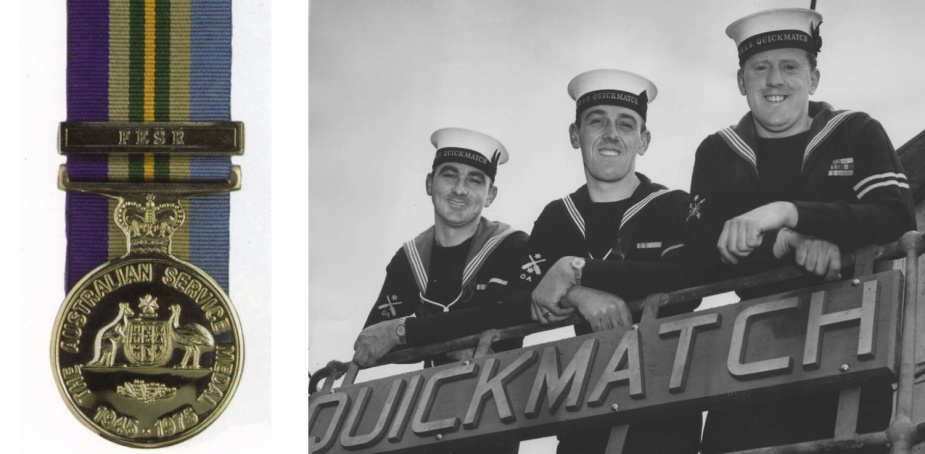The RAN, the Strategic Reserve and the Malayan Emergency
Less than three years after World War II ended, Communist terrorists began a bold policy of hit and run violence in Malaya aimed at demoralising the elected leaders. After several men prominent in political and private circles had been cold-bloodedly killed the Malayan Emergency was declared in June 1948 and was not lifted until July 1960. Britain, as leader of the British Commonwealth, appealed to Australia and New Zealand for assistance in restoring order and in 1950 Australia sent a Lincoln heavy bomber squadron and a Dakota transport squadron to Singapore for operations in Malaya.
In 1955 Australia agreed to increase its military assistance by contributing Navy, Army and Air Force units to a Malaysian-based Commonwealth Strategic Reserve. From 1955 the men and ships of the Royal Australian Navy contributed to the defence and development of the Federation of Malaya in different ways and at different levels. The units of the Strategic Reserve trained against the time that they might be used in a regional or even global conflict, in the defence of Malaya.
The directive for the Strategic Reserve, issued in January 1956, gave it two roles. The primary role was to provide “a deterrent to further Communist aggression in South East Asia”, with the British Defence Coordinating Committee (Far East), able to deploy units in defensive operations in the event of an attack on Malaya, Singapore, or the sea lines of communication around it. The secondary role was “to assist in the maintenance of the security of the Federation of Malaya by participating in operations against the Communist Terrorists”, but this was not to occur to the prejudice of the primary role. In practice the secondary role was to dominate in the 1950s.
The RAN’s contribution was to be two destroyers or frigates, an aircraft carrier on an annual visit and additional ships if an emergency arose. Subsequently, in June 1955 HMA Ships Warramunga and Arunta became the first RAN vessels to join the force. Other ships that served in Malayan waters during the Emergency were HMA Ships Anzac, Melbourne, Quadrant, Queenborough, Quiberon, Quickmatch, Sydney, Tobruk, Vampire, Vendetta and Voyager; some of which took part in shore bombardments against terrorist positions in the Johore State.
The naval contribution would amount to some 1500 personnel annually out of an Australian total of 4736, although the former figure included the 1000 men for the regular visit of the carrier and it’s embarked squadrons.
RAN ships did not spend all their time in Malayan waters, and visits to the great commercial port of Hong Kong and to other centres in Japan or Korea were a regular feature of service with the naval component. Much time was spent exercising at sea and testing the men and equipment for the roles they would be called on to fulfil in the event of war. Being part of a larger naval organisation also provided valuable experience for the ships from the smaller regional navies of Australia and New Zealand, affording them greater opportunities to conduct warfare exercises with and against their British counterparts.
Service with the Strategic Reserve could at times be arduous. Life at sea in the tropics was occasionally dangerous and seldom pleasant in mess decks that had no air conditioning (seven members of RAN ships were killed accidentally or died of other causes while serving with the Strategic Reserve).
The naval component’s secondary role in combating the communist terrorists (CTs) during the Emergency was largely symbolic. However, it should be noted that the effective naval blockade against the supply of arms and ammunition to the CTs from sources outside the country denied them any effective use of the sea throughout the Emergency.
Between 1955 and 1960 a total of 13 RAN ships served with the Strategic Reserve. Some of these attachments were for short periods involving, for example, participation in exercises conducted under the auspices of the South East Asia Treaty Organisation (SEATO). More generally however, an attachment lasted between six and nine months.
Far East Strategic Reserve - Roll of Honour
| HMAS Tobruk | Able Seaman | Robert William Spooner | 26 Apr 1957 | Killed when struck by a star shell casing fired by HMS Cockade |
| HMAS Anzac | Cook | Alan Campbell Cooper | 28 Dec 1957 | Drowned |
| HMAS Quickmatch | Engineer Mechanic | Dennis Hoare | 14 May 1961 | Illness |
| HMAS Vampire | Chief Petty Officer | Bryon Edward Plint | 01 Dec 1961 | Illness |
| HMAS Queenborough | Able Seaman | Brian Paul Pelgrave | 28 Sep 1962 | Drowned |
| HMAS Melbourne | Acting Sub Lieutenant | John Hutchison | 24 Mar 1965 | Aircraft crash |
| Lieutenant | Edward George Kennell | 28 Apr 1966 | Aircraft crash |




